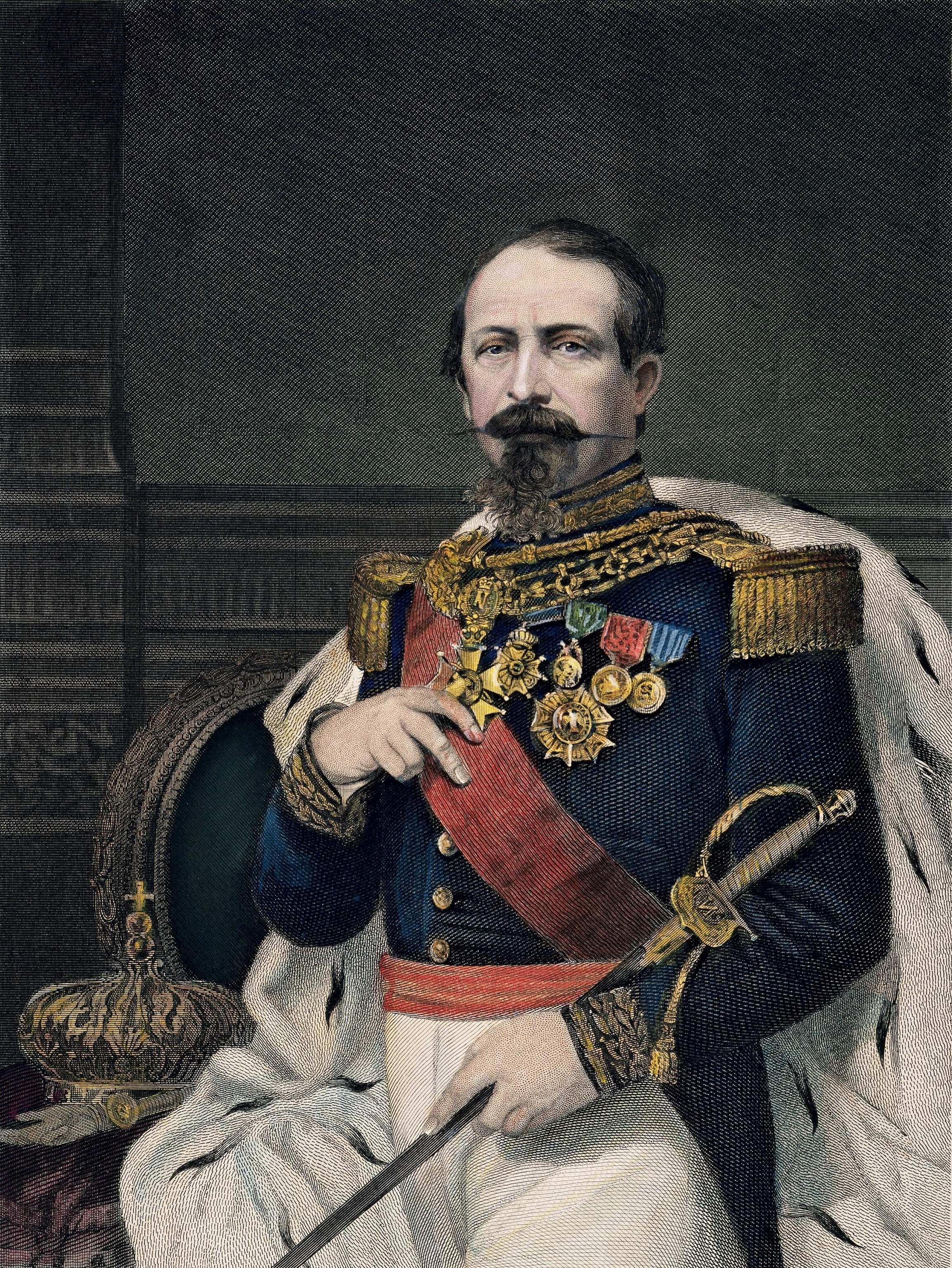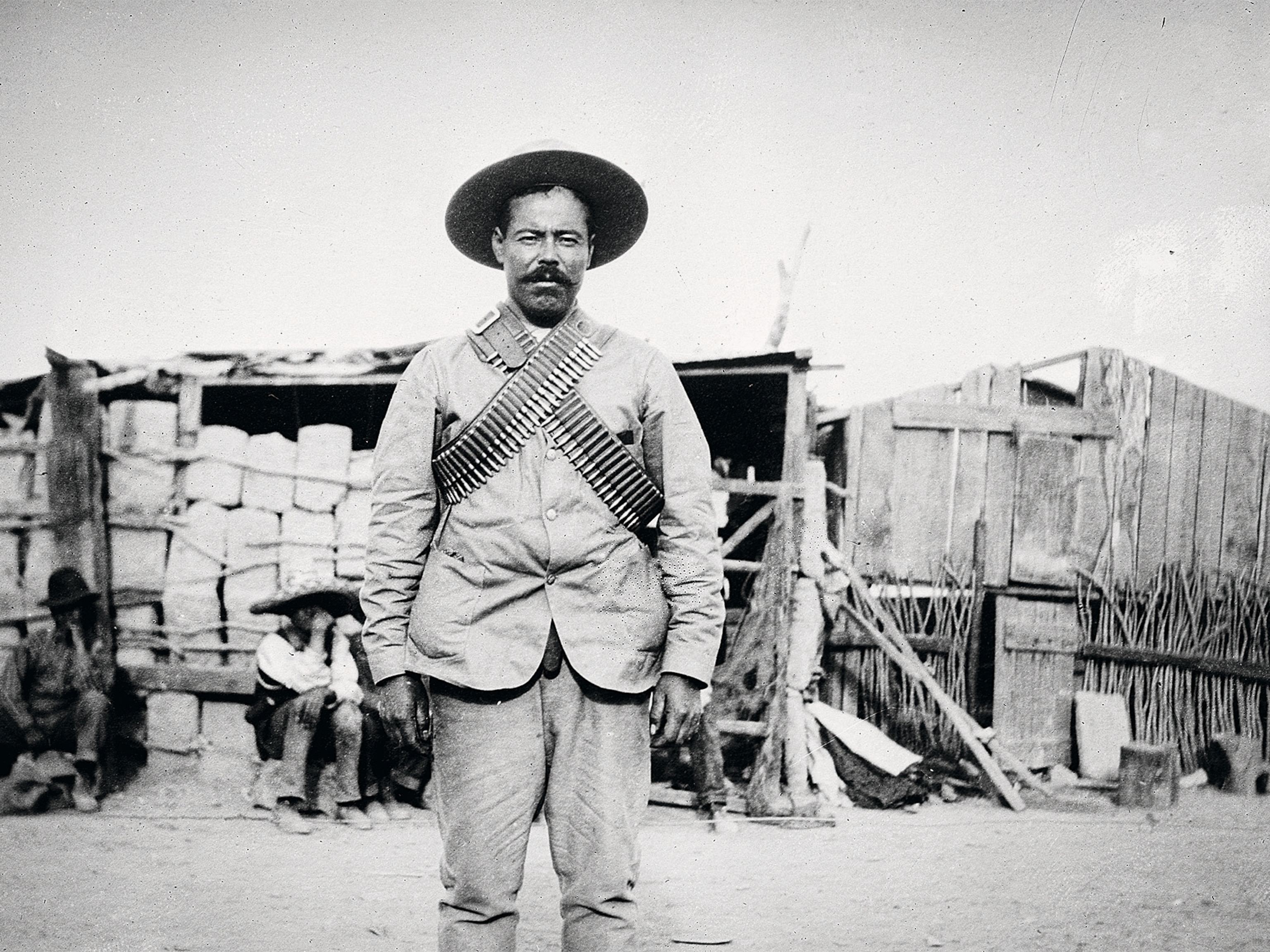The victorious origins of Cinco de Mayo
Behind modern Cinco de Mayo celebrations is the 1862 Battle of Puebla, a Mexican triumph over French colonial forces.

Parades, brightly colored dresses, sizzling street food, festive music, and laughter fills the streets every May 5, a date circled in revolutionary red on any Mexican calendar. On May 5, 1862, a ragtag Mexican army defeated the better-equipped hosts of the Second French Empire at the Battle of Puebla. The battle itself did not decide the war—the French returned to capture Puebla and Mexico City in 1863. France controlled Mexico until 1867, when Mexican troops overthrew their government and returned to being an independent republic.
Over time, the Battle of Puebla grew in national significance. The victory strengthened the morale of a very young Mexico and became the rallying cry of resistance to foreign domination. In commemoration of this day, Cinco de Mayo began as a celebration of the French defeat, but the holiday has grown and changed with time. For Mexicans in Puebla, as well as Mexican-Americans in the United States, it has become a complex symbol of Mexican culture, resilience, and character.

Fractured Foundations
To understand the Battle of Puebla, it is necessary to understand the roots of Mexico itself, going back to the 16th century. After Spain defeated the Aztec Empire in 1521, a new, blended society arose in Mexico, bringing together several different cultures. Finding a balance between its pre-Hispanic roots and new European identity proved challenging.
For three centuries after Cortés’s invasion, España Nueva (New Spain) was the most important overseas province of the Spanish Empire. It was ruled by a viceroyalty made up of many indigenous aristocratic families who had sought an alliance with the Spanish in order to defeat the Aztec Empire. Even so, resentment and tensions between Mexican natives, the Spanish, and the criollos—those of European origin who had been born in America—continued to grow, creating a shaky basis for the colony.
In 1808 Spain was invaded by the Napoleonic armies, which weakened Spanish control of New Spain. Many of the colonists wanted independence, and like many other colonies in the New World, they seized their moment and rebelled. On September 16, 1810, Miguel Hidalgo y Costilla, a priest and political leader in the central Mexican town of Dolores, exhorted Mexicans to rise up in a fiery speech delivered from his pulpit—the “Cry of Dolores.” War followed, ending with Mexico’s defeat of Spain in 1821. Hidalgo became the father of his country, and September 16 is celebrated as Mexico’s Independence Day.
Path to Puebla

In January 1862 European forces disembarked at Veracruz. Despite the diplomatic triumph at La Soledad, after which Spanish and British troops decided to withdraw, French forces seemed poised to march on Mexico City. On March 6, with Mexican commander Ignacio Zaragoza already facing a vastly superior foe, disaster struck. A huge arms dump on the outskirts of San Andrés Chalchicomula was accidently detonated, killing hundreds of soldiers and civilians and depleting Zaragoza’s reserves of munitions. Meanwhile, General Lorencez, the French commander, advanced across the Sierra Madre Oriental mountains at the Cumbres de Acultzingo, was met by General Zaragoza on April 28, who, despite admirable resistance, was forced to retreat under the intensity of the French attack. The French swept relentlessly on, aiming for the interior. The next major obstacle was Puebla, which they reached on May 5.
Even though the colonists had been united in a desire to be free, Mexicans were divided over the direction of their new nation. For the next 40 years, internal tensions wracked the country. Liberals, conservatives, and centralists all clashed as they sought to define Mexico’s future.
Internal upheaval and economic fragility were compounded by war with the United States in the 1840s. Disputes over control of Texas drew Mexico into a two-year conflict with its northern neighbor in 1846. In a humiliating surrender, Mexico ceded to the United States its claims to Texas, Utah, Nevada, and California, along with swaths of what are now Arizona, New Mexico, Oklahoma, Colorado, and Wyoming in 1848.
Reeling from the defeat, political tensions increased. The liberal faction favored the separation of church and state and freedom of religion, while the conservatives wanted to maintain ties between Mexico’s government and the Catholic Church. Another internal conflict ensued, later known as the Reform War, which ended in 1860 with a liberal victory. The next year, Benito Juárez became president. Born to Mesoamerican parents, Juárez would soon become a crucial player in the Cinco de Mayo story.
Following the liberal resumption of power, disaffected conservatives approached France’s Napoleon III to intervene. The French ruler was only too keen to move into the space left by the crumbling Spanish Empire, as well as provide a check on the expansion of the United States. Napoleon III also had a perfect excuse to invade: an 80-million-peso debt Mexico owed to European nations, including France.

To War Again
The Mexican-American War and the Reform War devastated Mexico’s economy. The nation had taken loans from the United Kingdom, Spain, and France to finance these war efforts, but now Mexico was hard-pressed to pay them back. In the summer of 1861, in an attempt to stabilize Mexico’s war-torn finances, Juárez announced that payment would stop for two years. In a short-lived alliance, the United Kingdom, Spain, and France sent a joint military expedition to force Mexico to honor the debt. By January 1862, 6,000 Spanish soldiers, 3,000 French troops, and 700 British soldiers disembarked in the Mexican port of Veracruz.
Before the forces moved toward Mexico City, the country’s capital, Juárez sent an ambassador to negotiate with the European powers. A meeting was organized in a hacienda near Veracruz named La Soledad on February 19, 1862. There, the Mexican foreign minister, Manuel Doblado, met with the British and the Spanish representatives, who eventually agreed to the Mexican requests to defer payment of the debt. The parties agreed not to advance out of agreed zones near Veracruz while negotiation of the debt was being resolved. The French, however, had their own agenda. Days after talks began at La Soledad, more French troops disembarked, commanded by French general Charles Ferdinand Latrille, Comte de Lorencez.
French intentions were now evident to all, and clearly had little to do with a default on a loan. Napoleon III wanted to topple the Juárez government to access Mexico’s resources and, in particular, to take advantage of the instability in the United States, then embroiled in its own civil war and unable to stop a French advance.
Heroes and Villains
A Tale of Two Armies
Juárez acted quickly and created a new battalion known as the Army of the East, commanded by Gen. Ignacio Zaragoza. The president ordered the fortification of the city of Puebla, anticipating a French march on Mexico City. As predicted, the French troops were advancing on Puebla by late April 1862—on the way to the coveted capital.
The differences between the two armies were glaring. The French army regarded itself as the best in the world, having remained undefeated since the Battle of Waterloo, nearly half a century before. The well-dressed French soldiers were also well armed with pistols, carbines, bayonets, and cannons, and had the invaluable support of the Zouaves, elite French military troops feared all over Europe for their ferocity, The Mexican side, meanwhile, was hampered by lack of combat experience. The few weapons they had were old, and their troops were underfed. To make matters worse, the country was polarized, with the conservative faction preferring a foreign intervention to being an independent republic.

A great deal, therefore, was at stake, and, at first, the Mexicans looked doomed. On April 28, the Sixth Battalion of the National Guard of the State of Puebla, formed by 4,000 precariously armed Mexicans, had their first encounter against superior French troops at the Cumbres de Acultzingo. After his resounding victory there, General Lorencez boasted: “We are so superior to the Mexicans in organization, race . . . and refinement of manners, that I am pleased to announce to His Imperial Majesty, Napoleon III, that from this moment on, as the leader of my 6,000 brave soldiers, I can consider myself the owner of Mexico.”
On the night of May 3, General Zaragoza arrived in Puebla. Sources vary on the exact number of men under his command, with estimates ranging from 2,000 to 5,000 men. Because he was outnumbered and outgunned, it was crucial that Zaragoza formulate a strong defense to hold the city. Puebla was surrounded by several stone forts, most notably Loreto and Guadalupe, which both stood atop a hill on the northern side of the city. The soldiers fortified Puebla by digging trenches, building breastworks, and repairing the forts as best they could.
Zaragoza then placed his men in strategic points throughout Puebla. Roughly a thousand would defend the northern side and its forts, with the remaining troops kept in reserve to counterattack any direct assault. The plan was set, and now all Zaragoza and his men had to do was wait for the French to arrive.
Bells of Puebla
Just after 9 a.m. on May 5, the Mexican forces spotted the French enemy on the horizon. Zaragoza and his men sat tight, while Lorencez began his attack. The French plan was to bomb the forts first in order to weaken the enemy’s defences and then charge in an all-out assault.
The plan may have seemed sound on paper, but in practice it failed to make much impact. The French began shelling Fort Guadalupe at 11:45 a.m., but the old stone walls held true. Discouraged, Lorencez moved his artillery closer, but the angle of the new position made targeting more difficult. By midday more than half their ammunition was gone, with little impact on the forts. It was time to change tactics.

Lorencez ordered his soldiers to attack. The brilliant defenses set up by Zaragoza kept the French at bay. As the soldiers advanced, Mexican guns in the forts fired on them from above. On the ground the ragtag fighters held true, some armed only with machetes and metal-tipped wooden spears. Three times, Lorencez sent in waves of his soldiers, and three times they were turned back. Around 2 p.m. a hard rain began to fall, soaking the battlefield. It was as if Tlaloc, the Aztec god of rain, was displaying his fury against the French soldiers.
With the ground made slick by rain and mounting casualties, Lorencez was forced to retreat. Zaragoza and his men had won the day. The bells of Puebla rang out, and that night the victorious Mexican forces celebrated by singing “La Marseillaise,” the song of the French revolution (and now France’s national anthem), which was banned at the time by Napoleon III.
There is no denying that the Mexicans fought with courage, but it is equally obvious that Lorencez made costly mistakes, a point made by Zaragoza in the telegram he sent to Juárez immediately after the battle: “The French troops showed their valor in combat and their leader his arrogance, foolishness, and clumsiness.”
Lorencez made two major misjudgments: First, he concentrated his attack on the city’s well-defended forts, instead of making for the city, which was more vulnerable. The other miscalculation was to position his cannons over a mile from the fortifications, much too far away for the projectiles to strike with full force. When Napoleon III heard of his incompetence, he immediately relieved him of his command.

Dispatches from the Front
While the battle raged in Puebla, in Mexico City the Juárez government waited desperately for news. Zaragoza’s silence made the president fear the annihilation of his forces. But just after 4 p.m. Zaragoza sent a laconic telegram informing that “the enemy has showered us with grenades. Their columns attacking the Loreto and Guadalupe hills have been repelled and we were probably attacked by four thousand men. All their push was towards the hill. Then their columns retreated and our forces advanced towards them. A heavy storm then started.”
He said nothing, however, of the final result. Zaragoza’s next telegram, arriving just before 6 p.m., clarified the outcome. Just before 8 p.m. Juárez received the best possible news: “Mr. President. I am very happy with the behavior of my generals and soldiers. They have all performed well . . . Let this be for good, Mr. President. I wish that our dear homeland, now so despondent, is one day happy and respected by all Nations.”
The joy was, however, short-lived, and only delayed the inevitable. The Mexicans had tasted victory in this battle, but the French took Puebla two years later, and Juárez’s government was defeated. With the support of Mexico’s conservatives, Napoleon III imposed the Austrian-Habsburg Maximilian as Mexico’s puppet king. Only in 1867, after the United States funded the anti-Maximilian resistance, was Juárez restored as president, and Maximilian executed.
Death of an Emperor

Édouard Manet’s “Execution of Emperor Maximilian” (Kunsthalle Mannheim, Germany) is an unsettling, ambiguous depiction of the violent conclusion of French interference in Mexico in 1867. There is pity for the condemned man, and perhaps criticism for the manner in which Napoleon III had sacrificed this puppet king to his ignominious death. In any case, with this execution, European colonial activity in Mexico—which had begun in 1519—was now at an end.
Victory Celebration
Ignacio Zaragoza would never live to see the French expelled from Mexico. At only age 33, he died of typhus four months after the famous victory. To honor his memory, Juárez decided to join his name to the city that had brought him fame, renaming it Puebla de Zaragoza. In June 1867, after returning to power, Juárez also commemorated the battle itself by declaring May 5 a national holiday.
Since then, Mexican celebrations of Cinco de Mayo have traditionally been held in Puebla. Visitors flock to the city in May for parades and a reenactment of the famous battle. In the United States holiday observances have grown larger and more widespread. From Los Angeles to New York City, Mexican-American communities celebrate not only a military victory but also a proud Mexican heritage with parades, colorful dancers, traditional music, and delicious food.











